Knowledge
Essential Handbook on Inclusive Education For Educators: Laws, Initiatives, Benefits & Challenges
To be able to develop a sincere learning environment for kids with special needs, we must first learn about the basics of inclusion in education and the laws that stand for it.
Published
4 years agoon
By
Rahul Sharma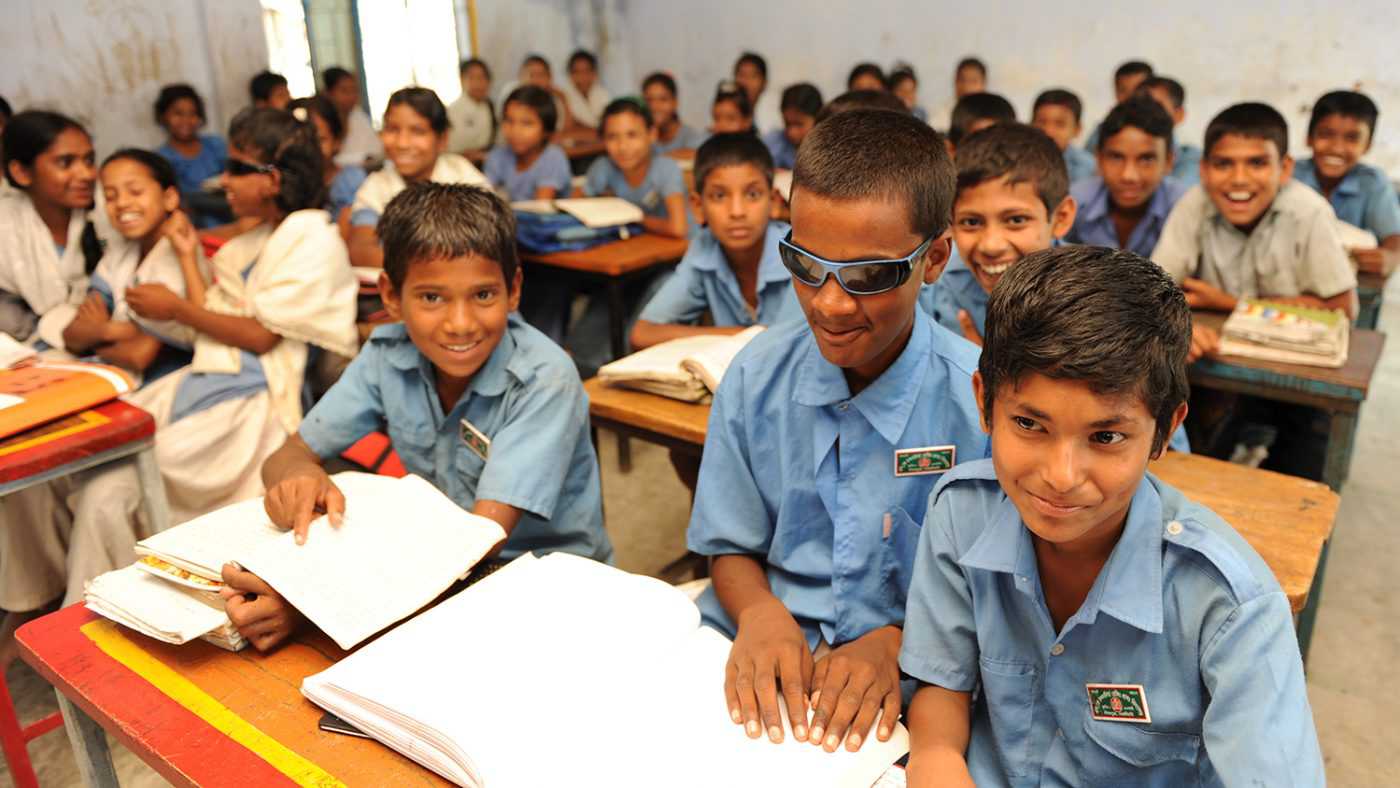
For this month, we decided to research on the practice of Inclusion in a typical K12 setting in India. We wanted to understand what it is like to be a child with disability sitting amongst those who may/may not look like him/her/them. To get more clarity, we reached out to many educators, as well as child behaviourists, who’re using interesting tactics to teach the future generation about Inclusiveness so they can grow into kind and compassionate human beings who don’t judge people based on their physical abilities and emotional aptitudes.
However, before we start digging deep, the educators must understand what it means to live a life encompassing everyone around them. To be able to develop this sincere behaviour in our little ones, we must first learn the basics of the globally-accepted term Inclusion, along with what the national laws that stand for those with special needs.
What Is Inclusion in Education aka Inclusiveness aka Inclusive Education?
Inclusion in education is a kind practice of giving equal space to children who might differ from others in terms of Physical, Mental or Social capabilities. This very concept in the worldwide education ecosystem is considered the key to providing justice to the ones who fall into this category.
Now, the responsibility of making the methodology of imparting education to everyone without any discrepancy lies upon the policy-makers and educators. It ultimately becomes their duty to teach the new generation about comprehensiveness, which means no one feels left out in a classroom, family, social gathering or a workplace.
To begin with, let’s learn how, by providing equal access to similar educational resources to every child, we can shine their and our future, together.
Benefits of Inclusive Education
A Sense of Belonging: When children from different social backgrounds, physical or mental capability grow up together in an educational space, they tend to develop a sense of belonging. By getting to observe people from different backgrounds and disabilities every day, they’ll learn to accept the realities from the very beginning which ultimately will enhance their acceptance as they grow up.
Confidence: The specially-abled children will feel that they belong to society as everyone else does. They will develop great confidence and will be able to walk the different fields of life with ease.
Better Academic Performance: It’s found that the differently-abled children perform better academically when they learn with other students in similar settings.
No Inferiority Complex: Children, for example, who are financially backward with respect to their peers feel the confidence to step out in the world with equal standing.
Eradicating Casteism: Caste-differentiation is sadly a huge issue in our country. To remove its existence fully, it’s important we inform the new generation how shallow this social practice is. To teach them to assimilate with others belonging to lower castes and keep social exclusion at bay, it’s good we start from our schools where they spend most of their time.
Inclusion of Families: The benefits of inclusive education are not restricted only to the children but also their families, as they too feel isolated from the community.
Growth of Economy: It is evident that a large number of Indians are actually out of the education system due to the lack of financial inclusion. This large number of unused human resource that is engaged in primary economic activities can be used to push the economy to new heights through essential skill development.
We already know that agriculture, being the primary economic activity, had the burden of providing employment to the highest percentage of the population. With the inclusion of this lot in our education system, we can increase the percentage of a skilled workforce of our nation.
Laws Supporting Inclusive Education in India (Amendments & Acts)
Keeping these aspects in mind, every country has formulated laws that make Inclusive Education a significant part of the national conscious and government policy-making. Let us have a look at some of the important laws that keep the spirit of Inclusion alive in India.
The Integrated Education of Disabled Children (IEDC) 1974
The act was put in action with the view to provide children with special needs with financial assistance for books, transportation, school uniforms, special equipment and aid.
The National Policy on Education, 1986 (NPE, 1986), and the Programme of Action (1992)
The policy stresses on integrating the special children in the same learning space with other groups.
The objective of the NPE is "to integrate the physically and mentally handicapped with the general community as equal partners, to prepare them for normal growth and to enable them to face life with courage and confidence."
Although this policy was created in 1986, it was not implemented until the Plan of Action was created in 1992. The 1992 Programme of Action (POA), created to implement the 1986 NPE, broadens the 1986 definition of who should be included in mainstream schooling, that “a child with a disability who can be educated in the general school should not be in the special school.”
Persons with Disabilities Act (Equal Opportunities, Protection of rights and Full Participation) 1995
It states that students with disabilities have the right to access education in a “free and appropriate environment” until they are 18 years of age, “promoting integration into normal schools.”
National Trust for Welfare of Persons with Autism, Cerebral Palsy, Mental Retardation and Multiple Disabilities Act, 1999
The government of India collaborated with the UN and the World Bank to make People with Disabilities Act a reality. It was formulated and passed in order to provide economic rehabilitation for people with disabilities.
The Right to Education Bill
The right to education bill was passed by making the 86th amendments to the Constitution and inserting article 21-A. It provides free and compulsory education to all children in the age group of six to fourteen years.
Rights of Persons with Disabilities Act (2016)
The act came as a replacement for the Persons with Disabilities Act 1995. The obligations of the United Nations Convention on the Rights of Persons with Disabilities are fulfilled by this act.
Apart from these laws, our Indian constitution also provides space for inclusion through a number of enshrined articles. The founding fathers of the nation understood how the exclusion of certain sections of our society from the mainstream has cost the nation dearly. Below are the two Articles of Constitution that were passed to give strength to inclusion.
- Article 29(2) of the Constitution provides that no citizen shall be denied admission into any educational institution maintained by the State or receiving aid out of State funds on the ground of religion, race, caste or language.
- Article 45 of the Constitution directs the State to provide free and compulsory education for all children (including the disabled) until they attain the age of 14 years. No child can be denied admission into any educational institution maintained by the State or receiving aid out of State funds on the ground of religion, race, caste or language.
Health Issue That Comes Under The Rights of Persons With Disabilities Act (2016)
Now that we know of the laws that consolidate major disabilities, let’s learn in details about the disabilities covered under the Rights of Persons with Disabilities Act (2016).
Blindness: The complete inability to see anything including light is defined as Blindness.
Low-vision: A significant visual issue that can be corrected with glasses, contact lenses of through surgery is termed as low vision.
Locomotor Disability: The disability that prohibits a person’s proper physical movement is classified as a locomotor disability.
Intellectual Disability: Formerly known as mental retardation, this disability is identified by a low level of cognition ability for performing the necessary activities in daily life.
Multiple Sclerosis: This disease affects the brain and the spinal cord causing disability.
Acid Attack: When a person suffers disfigurement due to an acid attack, then he/she is classified as a victim of acid attack.
Specific Learning Disabilities: Specific learning disabilities disrupts a student’s ability to read, write or perform mathematical calculations efficiently.
Speech and Language Disability: Speech and language disorder refers to the inability to communicate efficiently.
Thalassemia: Thalassemia is a genetic blood disorder in which the body fails to make a normal and adequate amount of haemoglobin.
Leprosy-cured persons: A person cured of leprosy might face disabilities such as physical activity limitations, stigma and discrimination.
Dwarfism: Stunted growth in height because of the genetics of other medical condition is known as Dwarfism.
Hearing Impairment: It refers to the partial or total loss of hearing that can affect daily life functions.
Autism Spectrum Disorder: This disorder affects the way that a person may interact and communicate with others.
Cerebral Palsy: Cerebral palsy is the condition that restricts the proper movement and coordination of muscles.
Muscular Dystrophy: The group of diseases that causes ever-increasing weakness and muscle loss are classified under Muscular Dystrophy.
Chronic Neurological Conditions: Chronic neurological conditions include a wide range of conditions that affect the nervous system.
Mental Illness: Mental illness refers to a group of issues that can adversely affect your mood, cognitive ability and behaviour.
Parkinson's Disease: Parkinson’s disease affects the nervous system gradually and causes the slowing of physical movement.
Haemophilia: Hemophilia reduces the ability of the blood to clot and causes severe bleeding even when the injury is small.
Sickle Cell Disease: It’s a group of haemoglobin-related disorders. Particularly, Hemoglobin S which can deform RBCs and turn them into a sickle-like shape.
Deaf-Blindness: Deafblindness is a combination of hearing and visual impairment that reduces one’s communication ability significantly.
Government Initiatives
Even though the laws are established to give fair rights to children with special needs, the govt. initiatives should not restrict to simply lawmaking. Instead, active constructive programs should run parallelly so we can achieve our set goals of SDG proficiently. Let’s learn how some of the well-known govt. campaigns support inclusiveness inside the Indian classrooms.
Sarva Shiksha Abhiyan
The Sarva Shiksha Abhiyan was launched with a vision to achieve the goal of ‘Universalization of Elementary Education.’ The Initiative seeks to implement the zero-rejection policy and also to connect various other government schemes and program.
Rashtriya Madhyamik Shiksha Abhiyan (RMSA)
Its aim is to improve and expand the standards of secondary education in India. It also seeks to increase the enrollment rate in schools by establishing schools at a rational distance from every home.
Samagra Siksha Abhiyan
Samagra Siksha Abhiyan is an extension of the erstwhile Sarva Sikhsha Abhiyan that puts great emphasis on Inclusion. Various activities such as identification and assessment of special children, appliances, corrective surgery, therapeutic services, orientation programs, curriculum adaptation, etc. have been added to the program.
Challenges Faced by India
With such a large population to bring under the spectrum of education, India is bound to face issues in providing appropriate facilities. when it comes to serving the special children, the challenges get more complicated. Below, we have shared some major roadblocks that India faces in terms of Inclusive Education.
Lack of Institution/Courses Preparing Teachers for Special Education
Imparting education to children with special needs is not an easy task and requires special training. The lack of such institutions in our country is a known fact which ultimately affects the quality of our teaching methods.
With such a large number of special children out there, we need to promote the establishments of more institutions that can produce the desired number of quality teachers.
Attitude Issues
The attitude of the stakeholders like teachers and school administration is also an important factor that determines the success of Inclusive Education. Inclusion may sound like a noble idea in principle but the practical attitude towards it has always been quite negative.
Teachers and school administration do have a preference for ‘normal’ children over specially-abled ones. The need of the hour is to promote sensitivity among the educators on the issue so that they aren’t afraid of taking up the responsibility and look at it with an open mind.
Faulty Curriculum
To practice Inclusion, schools need to choose a curriculum that is appropriate for every child, special or not. The issue of schools not being able to adapt a curriculum that is comfortable for each student is rampant throughout India.
Constant up-gradation of the curriculum through research is necessary in order to cater to this special category. For example, new games can be introduced for them during the Sport/Physical Education class, the deadlines for the submission of assignments can be made flexible for kids with special needs, a fellow student can be assigned as their class-BFF, the administration can let them use a Scribe during examinations without going through a lot of paperwork, or better, they can be asked to appear for examination through viva rather than the written format.
Environment
Children with special needs often require an Inclusive environment to be able to flourish. They need love and care not only from their teachers but peers, too. Acceptance from their fellow classmates and teachers boosts the confidence in them and enable them to adjust well.
Seating arrangements can be made according to the needs of special children, limitation of wall art so that the students with ADHD can focus better.
Financial Issues
The amount of financial resources required to implement nationwide Inclusive Education is hefty. Lack of appropriate funds is a roadblock that needs to be removed if a national Inclusion Policy is to be implemented.
The Way Forward
India, as a nation is still far behind when it comes to adhering to Inclusive practices in education and the reason behind this ethos is both historical segregation of sects and lack of finances. However, the successive governments have formulated different policies and introduced various effective initiatives so far to keep up with the changing social-economic dynamics and make Inclusion a strong pillar of our policy-making process.
For example, the recent draft of the National Education Policy has included the following objective:
“Achieve an inclusive and equitable education system so that all children have equal opportunity to learn and thrive, and so that participation and learning outcomes are equalized across all genders and social categories by 2030.”
- A great emphasis has been laid on the Under-Represented Groups or URGs in the draft of NEP 2019.
- A lack of access to schools, poverty, social biases, a non-inclusive curriculum has been recognized as some of the major issues that need to be addressed.
- The draft of NEP also mentions certain constructive techniques that will be implemented to address the issues faced by the URGs.
- Special Education Zones will be set up across the nation to provide the URGs comfortable access to education. The ratio of expenses and per-child expenditure will be shared between the centre and the state in the ratio of 2:1.
- In order to embed sensitivity among teachers about such groups, the NEP draft also includes an overall training of pre-service teachers as well as in-service professional training.
- The under-representation of teachers from the URGs is also a burning issue that the NEP draft seeks to address. The policy will seek to develop policies for the recruitment quality teachers from the URGs. It will reverse the previous method of ‘training followed by recruitment’ and put recruitment as the first step.
- To make learning more comfortable, the draft will keep The Pupil-Teacher ratio at 25:1.
- The school environment will also be kept positive through restricting exclusive practices, by cultivating sensitivity among students and keeping the curriculum in line with the objective.
Image courtesy- Sightsavers.org
You may like
-


Beyond The Screen: Virtual Battles, Real Consequences
-
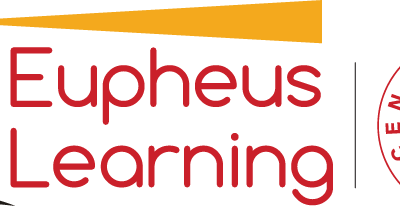

India’s Eupheus Learning Recognised in TIME’s World’s Top EdTech Rising Stars of 2024
-


Kerala Sets National Benchmark with AI Training Programme for 80,000 Teachers
-


Marked by Marks: The Stereotyping of Student Potential
-


Ivy Pressure Unveiled- The Need to Look Beyond the Ivy Gates
-


Ooty Set to Host India’s Premier Liberal Arts Symposium: LASSI 2024
-
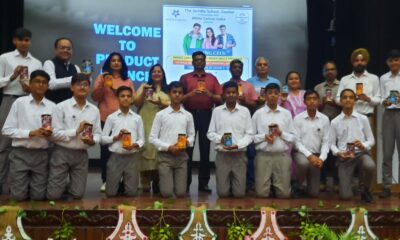

Scindia School Students Launch Start-Ups with White Canvas India’s Young CEO Program
-


Unsupervised Explorations: Rethinking Student Trips
-


Mapping Green Careers: Guiding Students Towards Sustainable Job Opportunities
-


Pricey Presents, Precocious Pressures: The Cost of Gift-Giving to Children
Education
Beyond The Screen: Virtual Battles, Real Consequences
Published
2 days agoon
April 26, 2024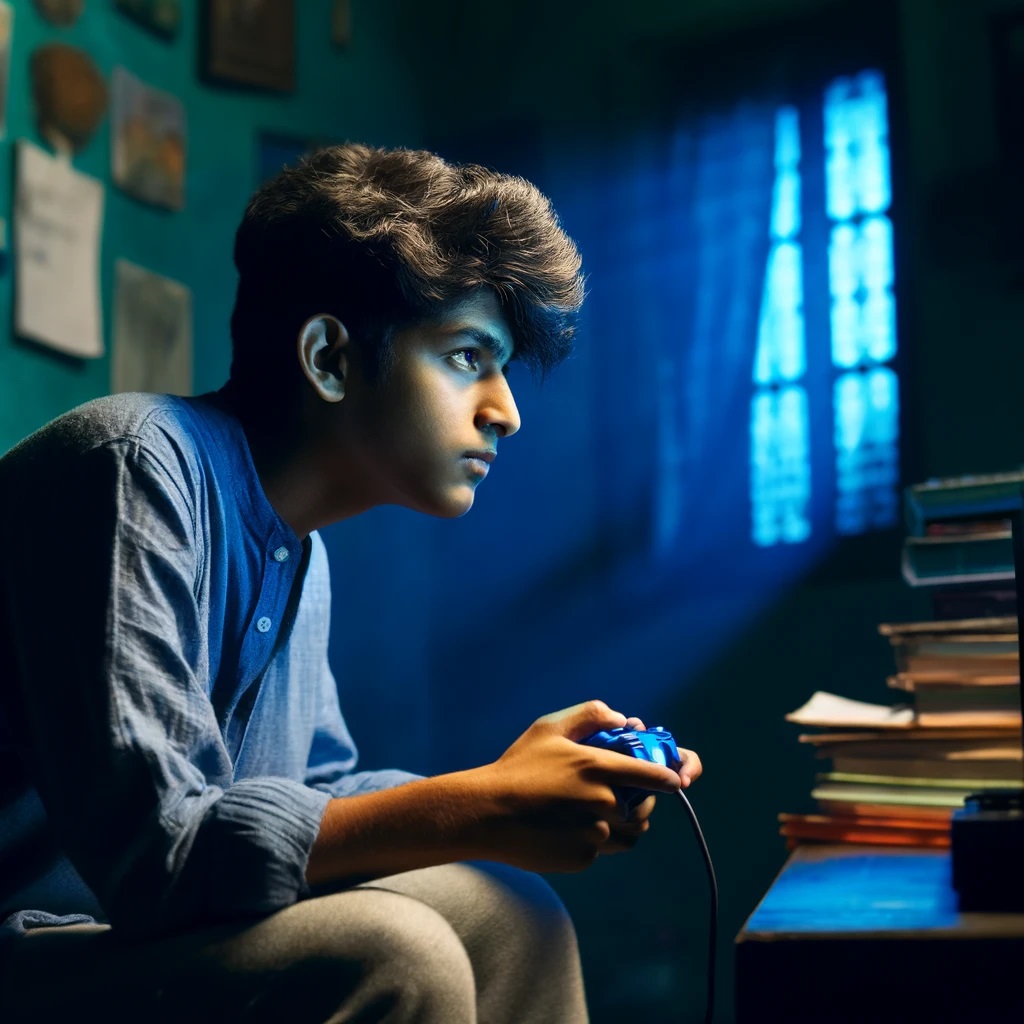
In the vibrant corridors of Eduson College, amidst the chatter of aspirations and the rustle of textbooks, lived the story of Rishi, a student whose world oscillated between the realms of academia and virtual battlegrounds. With the close of each school day, Rishi, like many of his peers, descended into the digital trenches of PUBG, where victories were counted in kills and survival was the sole creed.
Rishi’s descent into the gaming vortex was gradual but consuming. The initial allure of camaraderie and challenge on the virtual battlefield soon morphed into an addiction that blurred the lines between entertainment and obsession. Night after night, the glow of his screen illuminated his singular focus, as the real world, with its demands and duties, faded into the background.
The consequences of Rishi’s digital dalliance were manifold. Physically, the hours spent in gaming marathons manifested as blurred vision, a constant crick in his neck, and an unwelcome weight gain. Academically, the sharpness and concentration that once defined his scholarly pursuits dulled, replaced by a pervasive lethargy that clouded his thoughts and ambitions.
But the ramifications extended beyond the tangible. The aggression and competitiveness that were once confined to the game began to seep into Rishi’s interactions, straining relationships and isolating him from those who once comprised his support system. The virtual victories, once a source of exhilaration, now served as a stark reminder of the disconnect between his online persona and the person he aspired to be.
As the reality of his situation dawned on him, catalysed by a reflective conversation with a concerned mentor at Eduson College, Rishi began to question the path he was on. Was the ephemeral thrill of digital dominance worth the erosion of his health, his relationships, and his future?
This narrative, while fictional, echoes the experiences of countless young adults ensnared in the web of gaming addiction, challenging us to confront the shadow it casts over their lives.
Following Rishi’s tale, it’s imperative to ground our understanding with tangible insights. A recent survey conducted among 200 students aged 18 to 20 years, as published in the International Journal of Science, Technology and Management (IJSTM), sheds light on the gripping nature of gaming addiction. The study revealed (undertaking 122 boys and 78 girls) that students have been significantly impacted by frequent engagement with violent video games such as PUBG. Key findings underscore the learning of aggressive attitudes and behaviours, diminishing eyesight, and reduced concentration in studies as the three primary adverse effects of prolonged game play.
As we navigate the story of #BeyondTheScreen, a crucial question beckons for reflection: How can we, as a society, educators, and families, foster environments that encourage balanced engagement with technology, ensuring that the digital worlds our students explore enhance, rather than detract from, the richness of their real-world experiences and potential?
To read more on such trends that need to be called out and #un-trended, head to the April issue of our magazine here.
Education
Marked by Marks: The Stereotyping of Student Potential
Published
3 days agoon
April 25, 2024
In the corridors of Prestusse Academy, where aspirations soared as high as the academic standards, Riya stood at a critical juncture. With her heart tethered to the humanities, she yearned to explore the vast landscapes of history, literature, and art. Yet, the societal symphony championing the supremacy of science and mathematics orchestrated a different path for her. Under the immense pressure of family expectations and societal norms, Riya found herself capitulating, stepping onto a path that was not her own.
As she enrolled in the science stream, a part of her spirit wilted. The subjects that once ignited curiosity and wonder in her peers seemed to her like insurmountable walls, blocking the view of her true passions. Despite her efforts, Riya’s academic performance, once stellar when fuelled by genuine interest, became painfully average. The accolades and recognition that used to be frequent visitors in her life now passed her by, unaware of her presence.
The transformation was stark. Riya, who could once articulate the beauty of a poem or the intricacies of historical events with unparalleled eloquence, now found herself lost in the labyrinth of equations and scientific theories. Her confidence, which was once anchored in her intellect and creativity, began to erode, leaving her to question not just her academic choices, but her inherent worth.
The decision to forgo her passion for the humanities in favour of a more ‘prestigious’ stream haunted her. Each day in the science class served as a reminder of what she had sacrificed at the altar of societal expectations. The vibrant discussions and debates that characterised humanities classes were now replaced with a silence that weighed heavily on her, a constant echo of her misplaced aspirations.
As the years passed, the repercussions of her decision rippled through her academic career and beyond. The girl who once dreamt of becoming a historian or a literary critic now found herself meandering through life, devoid of direction. Her attempts to reconnect with her passion for the humanities felt like too little, too late. The confidence and zeal that once defined her were replaced with a sense of mediocrity, as she became a jack of all trades, but master of none.
Riya’s story is a sombre reflection on the cost of conforming to societal pressures at the expense of one’s true calling. It begs the question: How many bright futures have been dimmed by the shadow of conformity? How many Riya’s must we witness before we acknowledge that the true measure of success lies not in the stream chosen, but in the passion and perseverance with which one pursues their dreams?
The tale of Riya’s detour from her passion to a path laid out by societal norms ends with a hard-hitting question for every stakeholder in a child’s education: Are we nurturing the seeds of individual talent and passion, or are we imposing our own unfulfilled aspirations and societal biases, thereby stunting the growth of potential luminaries in fields they were never meant to shine in?
Education
Ivy Pressure Unveiled- The Need to Look Beyond the Ivy Gates
Published
4 days agoon
April 24, 2024
In the heart of Prestise Valley School, nestled in a bustling city that prided itself on academic excellence, the story of Shanaya unfolded—a narrative steeped in ambition, aspiration, and the unspoken realities of chasing Ivy League dreams.
Shanaya , with her keen mind and boundless ambition, had always been the emblem of Prestise Valley’s pursuit of academic supremacy. Encouraged by a system that equated success with admission to the world’s most esteemed universities, she became the embodiment of her school’s aspirations. The corridors buzzed with talks of her future, painting her as the next prodigy destined for Ivy League glory.
As the acceptance letter from an illustrious Ivy League college arrived, it was not just a personal victory for Shanaya but a badge of honour for Prestise Valley. Yet, beneath the veneer of celebration, lay an overlooked truth—while Shanaya was prepared to compete for her place among the elites, she was unprepared for the reality that awaited her beyond the hallowed halls of her dream college.
Embarking on her journey with pride and anticipation, Shanaya soon encountered the stark disparity between being academically eligible and being holistically prepared. Surrounded by peers who were not only academically gifted but also equipped with a wealth of practical skills and worldly insights, she felt increasingly out of her depth. The rigorous curriculum, coupled with the expectations to excel in extracurricular arenas, highlighted the gaps in her preparation. Skills that should have been nurtured alongside academic pursuits—critical thinking, adaptability, and emotional resilience—were conspicuously absent.
The realisation dawned upon Shanaya that the race to the Ivy gates had overlooked the essence of true education. Her school’s relentless focus on prestigious admissions had neglected the foundational aspects that would enable her to thrive in such a competitive environment. With a heavy heart, Shanaya made the difficult decision to return home, facing not just the personal disappointment of unfulfilled potential but also the weight of collective expectations.
Her return was met with a silence that spoke volumes, a stark contrast to the fanfare that had heralded her departure. In the quietude of introspection, Shanaya pondered the lessons learned—not from textbooks, but from life. She resolved to chart a new path, one that balanced academic aspirations with the development of a versatile skill set and a resilient spirit.
Shanaya ‘s story, a mirror to countless young minds navigating the pressures of Ivy League aspirations, serves as a poignant reminder of the need for a holistic approach to education. It challenges the prevailing narrative, urging a shift from the singular goal of elite college admissions to fostering well-rounded individuals capable of navigating the complexities of the global stage.
As we explore the stories behind #IvyPressureUnveiled, how might we reconsider the essence of education—not merely as a race to the pinnacle but as a pathway of growth, discovery, and genuine readiness for life beyond the Ivy gates?
To read more on such trends that need to be called out and #un-trended, head to the April issue of our magazine here.
Education
Unsupervised Explorations: Rethinking Student Trips
Published
5 days agoon
April 23, 2024
In a tale of youthful exuberance and unforeseen peril, six students from Class 12 embarked on a journey to Goa, a rite of passage celebrated by many as a final hurrah before stepping into adulthood. With permission from their parents, who were perhaps too trusting or caught up in their own lives, the group set out with excitement pulsing through their veins. Upon landing, they were greeted not just by the balmy Goan air but by three massive SUVs, reserved for their adventure—a promise of freedom and the thrill of the open road.
Their accommodation was a sprawling villa, costing a small fortune at 70,000 INR per night, equipped with private pools and luxuriously appointed rooms. It was a palace for kings and queens of the night, a haven for six souls intertwined in the throes of adolescence. Three rooms for three couples, the arrangements were a testament to their intentions, seeking privacy and moments of unchecked passion under the guise of a holiday.
As the days unfolded, the allure of Goa’s vibrant nightlife beckoned. The students, drawn to the magnetic pull of music and dance, found themselves in the heart of the party scene, clubbing into the early hours. It was here, amidst the revelry, that they encountered individuals with sinister motives—drug peddlers who saw not just customers but vulnerable targets in these wide-eyed teenagers.
Swept up in a desire to appear worldly and sophisticated, the group made a decision that would pivot their holiday from a dream to a nightmare. They purchased drugs, a choice made without foresight or understanding of the consequences. Their naivety became their downfall when the police, vigilant and unyielding, caught them in possession of these illegal substances.
The aftermath was swift and severe. The teenagers, underage and unprepared for the legal ramifications, were thrust into the cold reality of juvenile custody. Their parents, irrespective of their affluence, were faced with a situation no amount of money could easily resolve. Frantic and fearful, they did everything within their power to secure their children’s release, confronted with the harsh truth of their offspring’s actions.
This story, inspired by real events, serves as a stark reminder of the dangers lurking behind the facade of freedom and the allure of adulthood. It raises pressing questions about the role of guardianship and parental oversight in the lives of teenagers standing on the precipice of adulthood.
Could this grave misstep have been avoided had there been a local guardian present, a guiding light in unfamiliar territory? Would a more vigilant approach from the parents, a pause to question and understand, have rewritten the story’s conclusion? This incident forces us to confront the reality of our responsibilities towards our youth—not just to grant them freedom but to equip them with the wisdom to navigate it. As we ponder the delicate balance between trust and caution, we must ask ourselves: At what cost does freedom come, and are we doing enough to ensure that the journey into independence does not lead to a fall from grace?
To read more on such trends that need to be called out and #un-trended, head to the April issue of our magazine here.
Education
Mapping Green Careers: Guiding Students Towards Sustainable Job Opportunities
Published
6 days agoon
April 22, 2024
In the wake of escalating environmental concerns and the global push towards sustainability, the demand for green careers is surging. This World Health Day, celebrated on 22 April, 2024, let us understand these careers that not only aim to protect and preserve our planet but also offer promising economic prospects. Indian educational institutions, recognising the burgeoning sector of environmental jobs, are increasingly gearing their curricula and guidance services to help students navigate this new green economy.
Understanding Green Careers
Green careers encompass a broad spectrum of industries and sectors that aim to reduce environmental impact and promote sustainability. From renewable energy and sustainable agriculture to environmental policy and green architecture, the opportunities are vast and varied. These careers are crucial in addressing the challenges posed by climate change, resource depletion, and ecological degradation.
The Role of Schools in Promoting Green Careers
Schools play a pivotal role in shaping the career choices of students. By integrating environmental education and sustainability into their curricula, schools can expose students to the importance and viability of green careers. This can be achieved through several strategic initiatives:
- Curriculum Integration: Incorporating topics on sustainability, environmental science, and eco-friendly technologies within the STEM subjects can provide students with the foundational knowledge necessary for pursuing careers in these fields.
- Career Counselling: Schools can offer specialised counselling sessions that inform students about various green careers. These sessions can include information on the requisite educational paths, potential job markets, and long-term benefits of working in eco-conscious sectors.
- Industry Partnerships: Collaborations with companies and organisations in the sustainability sector can offer students real-world exposure through internships, workshops, and guest lectures. These experiences are invaluable in helping students make informed decisions about their future careers.
- Project-Based Learning: Encouraging students to undertake projects that solve real environmental issues can spark interest in green careers. These projects not only enhance learning but also instil a sense of responsibility towards the environment.
The Indian Job Market Prospects
In India, the renewable energy sector is a significant employer, with the country aiming to reach a renewable energy capacity of 450 GW by 2030. Careers in solar panel installation, wind energy engineering, and sustainability consultancy are on the rise. Moreover, the government’s emphasis on clean technologies and sustainable urban planning is creating numerous opportunities in green architecture and environmental planning.
Global Job Market Trends
Globally, the green job market is expanding rapidly. In Europe, the European Green Deal aims to make the EU’s economy sustainable by turning climate and environmental challenges into opportunities across all policy areas. This initiative is expected to bolster job creation in renewable energy, energy efficiency, and green transportation sectors.
In the United States, the growth of the electric vehicle (EV) industry is driving demand for jobs ranging from high-tech battery manufacturing to network systems management for EV charging stations. Similarly, the push for green buildings is fuelling a need for professionals skilled in green construction and building information modelling.
Preparing Students for the Future
By promoting green careers, schools are not only guiding students towards economically viable job paths but are also preparing them to be active participants in the stewardship of the planet. This dual focus on economic growth and environmental sustainability is essential for building a resilient global economy that can address the pressing challenges of our times.
To summarise, as the world increasingly pivots towards sustainability, the role of education in preparing the next generation for green careers becomes more crucial. Schools that embrace this shift not only contribute to the global demand for environmental stewards but also ensure that their students are ready for the future job market—a market that values both the economy and the environment.
Education
Pricey Presents, Precocious Pressures: The Cost of Gift-Giving to Children
Published
6 days agoon
April 22, 2024
In the intricate fabric of contemporary society, entwined with the threads of status and materialism, the ritual of gift-giving to young children has morphed into a showcase of wealth and social stature. This tale shines a light on the ripple effect of such extravagance through the eyes of Ayaan’s peers, young souls caught in the whirlwind of competition and comparison.
When Ayaan arrives at school with sneakers worth 80k or brandishes the latest iPhone as casually as a textbook, it’s not just a display of wealth; it becomes a benchmark, setting aflame a cycle of envy and desire among his classmates. The children, innocent in their yearnings, unknowingly step onto a treadmill of materialistic pursuit, urging their parents towards the edge of financial prudence in a bid to not fall behind.
The spectacle reaches its zenith when Ayaan, in a display of unparalleled opulence, gifts iPods as return gifts on his birthday. An act, while grand, sends shockwaves through his circle, planting seeds of expectation and entitlement in young hearts. Parents, caught between nurturing happiness and teaching value, find themselves navigating a treacherous path of societal pressure and fiscal responsibility.
As each child in Ayaan’s orbit feels compelled to mirror his lavish lifestyle, the essence of childhood camaraderie is shadowed by the looming spectre of materialism. Friendships, once untainted by the world’s complexities, now bear the weight of economic disparity. The playground becomes a silent witness to conversations not of games and dreams, but of gadgets and brands, a testament to a culture veering away from the innocence of youth.
The impact extends beyond the tangible, chipping away at the pillars of equality and mutual respect. As peers vie to outdo each other in a race fuelled by parental indulgence, the divide widens not just in their possessions but in their perceptions of self-worth and success. The classroom, a microcosm of society, reflects a disturbing trend of measuring one’s value through the lens of ownership and extravagance.
This narrative, while centred on Ayaan and his affluent displays, casts a spotlight on the broader societal implications of such gift-giving practices. It prompts a critical examination of the values we impart to our children and the world we aspire to create for them. As we navigate this maze of materialism and the stories of Ayaan and his peers unfold, they serve as a mirror to our collective conscience, urging us to reconsider the legacy we wish to leave behind. The question that beckons us to reflect is profound: Are we raising a generation that values possessions over people, status over substance?
To read more on such trends that need to be called out and #un-trended, head to the April issue of our magazine here.
Knowledge
Young Birders’ Workshop Opens Registration for Children Aged 10-13 Years
Published
2 weeks agoon
April 16, 2024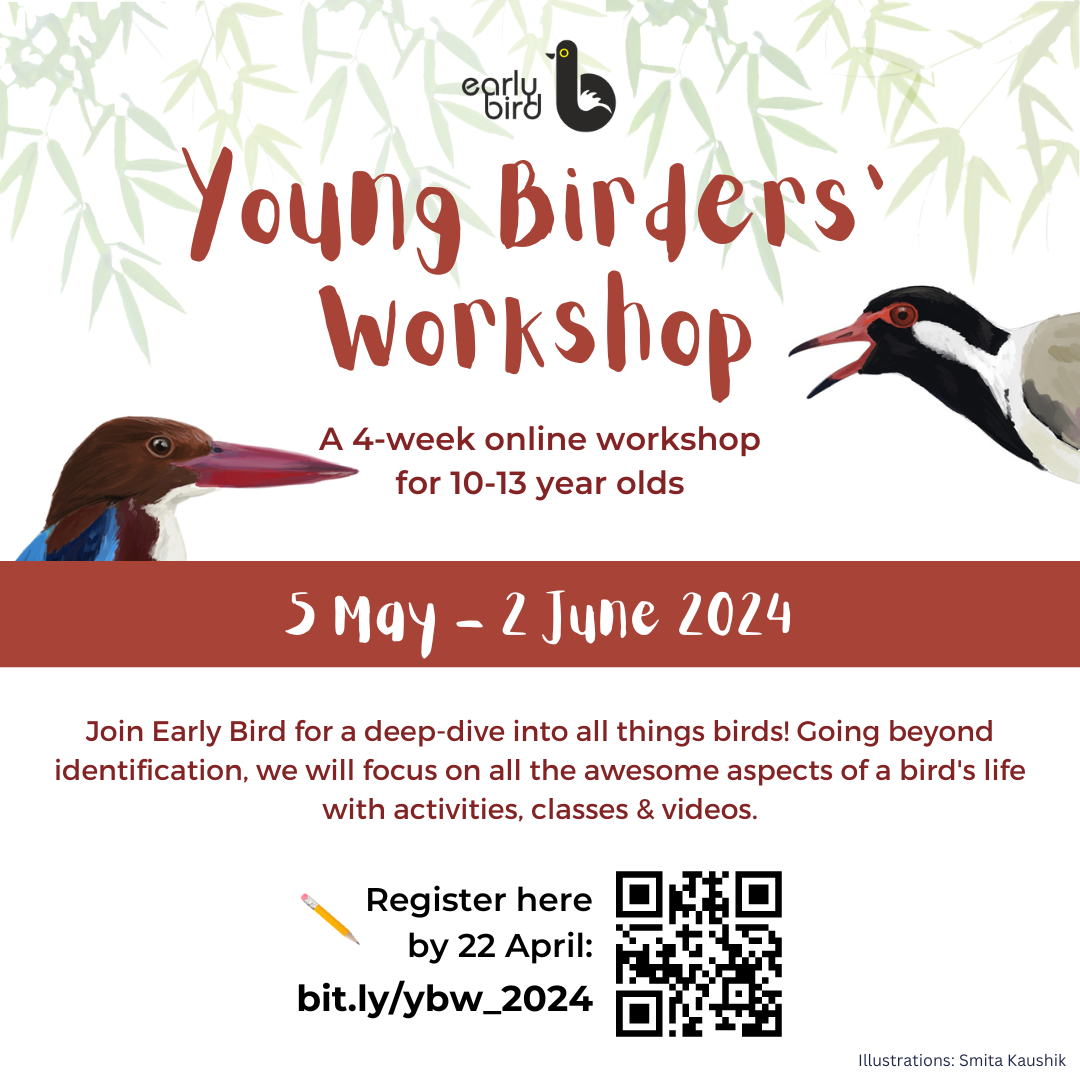
Early Bird, a not-for-profit initiative by the Nature Conservation Foundation, has announced the launch of an online birdwatching workshop tailored specifically for young enthusiasts aged 10-13 years. As birdwatching gains popularity across India, Early Bird aims to deepen young birders’ understanding of their natural surroundings, beyond merely ticking off bird names from their lists.
Set to commence during the summer holidays, this 4-week intensive programme will explore various themes through online sessions that combine multimedia, guided interactions, and lively discussions. These weekly live sessions will be held on consecutive weekends, each supplemented by an illustrated activity sheet that encourages participants to engage with and observe the green spaces around their homes.
The workshop is designed not only to educate but also to foster a deeper appreciation and awareness among children of the ecosystems they inhabit. “The workshop has changed our lives so much. We have found around 30 bird varieties around our house which we were completely unaware of,” shared Rupinder Kaur, a parent of a participant from previous workshops.
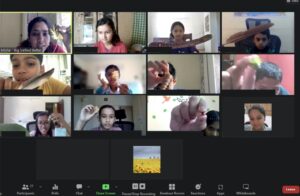
“My son never journaled or made notes. Now, he has started noticing everything when we go out to walk and wants to carry his journal. He has always hated writing but now carries his book and pencil and is ready to make notes. This workshop has made a difference to the way he looks at things. Quite enlightening. Has a lot to ask and share.“ said another participant’s parent.
While the workshop itself is free to attend, there is a nominal fee of Rs. 800 for materials, ensuring that all participants have access to the necessary resources to fully benefit from the experience.
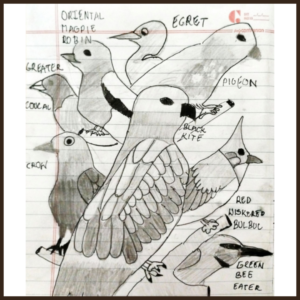


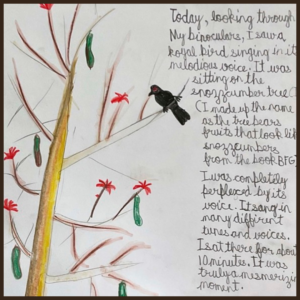
Registrations for the workshop are now open and can be accessed through the link provided here. This initiative aims to be an enlightening experience, allowing young minds to discover and connect with the biodiversity that exists right in their backyards.
Early Bird continues to dedicate itself to bringing children closer to nature through educational content, training educators, and direct outreach, fostering a new generation that values and conserves our natural world.
Education
The Role of Marketing in Education: Navigating the New Educational Landscape
Published
3 weeks agoon
April 10, 2024
In an increasingly competitive and interconnected world, the concept of marketing, once synonymous with businesses and industries, has found its place within the realm of education. As educational institutions vie for attention amidst a cacophony of voices, the need for strategic marketing and public relations (PR) efforts has become paramount. While the moral implications of marketing in education may spark debate, there is a compelling argument for incorporating marketing concepts into the educational curriculum, equipping students, teachers, and parents with the knowledge and skills to make informed decisions in an ever-evolving educational landscape.
Gone are the days when educational institutions relied solely on their academic prowess to attract students. In today’s digital age, where information is abundant and attention spans are fleeting, the ability to cut through the noise and communicate effectively has become a prerequisite for success. From crafting compelling brand narratives to leveraging social media platforms, educational institutions are embracing marketing strategies to enhance their visibility and appeal to prospective students and stakeholders.
However, the incorporation of marketing into the educational sector extends beyond mere promotional efforts. At its core, marketing is about understanding the needs and preferences of your target audience and delivering value accordingly. By teaching marketing concepts to students, educators empower them with critical thinking skills and an understanding of consumer behaviour, enabling them to navigate the complex marketplace of ideas and opportunities.
Moreover, marketing education goes beyond the classroom, extending its reach to teachers and parents alike. Educators, tasked with shaping the minds of future generations, can benefit from an understanding of marketing principles to engage students more effectively and create meaningful learning experiences. Similarly, parents, as key stakeholders in their children’s education, can make more informed decisions about school choice and educational resources by understanding the marketing strategies employed by educational institutions.
Critics may argue that the commodification of education undermines its intrinsic value and fosters a culture of competition at the expense of collaboration. While these concerns are valid, it is essential to recognize that marketing, when approached ethically and responsibly, can serve as a powerful tool for positive change. By promoting transparency, accountability, and accessibility, marketing can help bridge the gap between educational institutions and the communities they serve, fostering a culture of trust and mutual respect.
The integration of marketing concepts into the educational curriculum represents a paradigm shift in how we approach education in the digital age. By equipping students, teachers, and parents with the knowledge and skills to navigate the complexities of the modern educational landscape, we empower them to make informed decisions and drive meaningful change. As we embrace the potential of marketing in education, let us remain mindful of its ethical implications and strive to harness its power for the greater good.
Education
From Overwhelmed to Empowered: Strengthening Educator Skills for Success
Published
3 weeks agoon
April 10, 2024
In the corridors of any classroom, teachers stand as pillars of guidance, tasked not only with imparting knowledge but also with nurturing the holistic development of their students. However, the onerous burden of managing a multitude of responsibilities within resource-constrained environments poses a formidable challenge, underscoring the urgent need for enhanced teacher training programmes.
At the heart of this challenge lies the staggering class sizes prevalent in Indian schools. With classrooms often overflowing with 35 or more students, the task of catering to diverse learning needs while maintaining order can seem insurmountable. Effective classroom management techniques, tailored to accommodate large cohorts, are essential for fostering a conducive learning environment and mitigating stress for both teachers and students.
Moreover, the complexity of the modern educational landscape necessitates a multifaceted approach to teaching. From addressing academic gaps to promoting socio-emotional well-being, educators are expected to wear multiple hats, often without adequate training or support. Enhanced teacher training programmes must equip educators with the pedagogical tools and strategies necessary to navigate this intricate web of responsibilities effectively.
Central to the need for better teacher training is the imperative of managing workload and stress. The relentless demands of completing the curriculum, crafting assessments, and addressing administrative tasks can take a toll on educators’ mental health and overall well-being. By providing teachers with comprehensive training in stress management techniques, time management strategies, and self-care practices, we can empower them to strike a balance between professional duties and personal wellness.
Addressing the point of the topics that should be touched upon, these teacher training programmes must encompass modules on effective assessment practices and differentiated instruction. By equipping educators with the skills to design assessments that cater to diverse learning styles and abilities, we can ensure that every student receives the support they need to thrive academically. Similarly, training in differentiated instruction enables teachers to tailor their teaching methods to meet the individual needs of each student, fostering a more inclusive and equitable learning environment.
In addition to addressing immediate challenges, enhanced teacher training programmes must also focus on future-oriented skills and competencies. With rapid advancements in technology and pedagogy, educators must be prepared to adapt to changing educational landscapes and embrace innovative teaching methodologies. By providing training in digital literacy, collaborative learning, and project-based instruction, we can empower teachers to harness the potential of emerging technologies and create engaging learning experiences for their students.
Ultimately, the need for better teacher training is not merely a matter of professional development; it is a moral imperative. By investing in the growth and well-being of educators, we invest in the future of our nation. Because one teacher’s well-being will lead to the well being of those 35 other kids in a classroom.
Education
Nurturing Healthy Behaviors: The Role of Schools in Shaping Health-Conscious Citizens
Published
3 weeks agoon
April 7, 2024
In the landscape of education, schools play a pivotal role far beyond the realms of academic learning; they are instrumental in moulding the future of our society by nurturing health-conscious citizens. This World Health Day, as we embrace the theme ‘My health, my right’, it’s crucial to spotlight the impact of school programs and policies in fostering healthy lifestyle choices among students. This endeavour not only aligns with students’ rights to education about health but also paves the way for a healthier, more informed generation.
In India, where diverse cultural backgrounds and socioeconomic statuses often dictate one’s access to health education and resources, schools have a unique opportunity to bridge these gaps. The Midday Meal Scheme, one of the largest school nutrition programs globally, serves as a sterling example. By providing nutritious meals to children in government and government-aided schools, it aims not just to combat hunger but to promote nutritional education and healthy eating habits among young learners. This initiative directly impacts the health and educational outcomes of approximately 115 million children across the country, showcasing the powerful role schools can play in shaping health-conscious behaviours.
Furthermore, the Government of India’s Rashtriya Kishor Swasthya Karyakram (RKSK) program emphasizes the importance of adolescent health, targeting the 253 million adolescents in the country. RKSK aims to integrate health education into schools, covering critical areas such as nutrition, mental health, and substance misuse, thereby ensuring that young individuals are equipped with the knowledge and skills to make informed health decisions.
However, the journey doesn’t end with national programs. Individual schools across India are taking innovative steps to encourage healthy behaviours. For instance, several institutions have introduced yoga and meditation into their daily routines, recognizing the importance of mental well-being alongside physical health. These practices not only improve students’ concentration and stress management skills but also instill a lifelong appreciation for holistic health practices.
Moreover, environmental health has become a growing concern, with schools incorporating lessons on sustainability and the importance of preserving our planet for future generations. Initiatives like setting up organic gardens, recycling projects, and awareness campaigns on water conservation are becoming increasingly common, fostering an eco-conscious mindset among students.
Despite these strides, challenges remain. Access to quality health education and resources is not uniform across India’s vast and varied landscape, with rural and underprivileged communities often at a disadvantage. Addressing these disparities requires concerted efforts from policymakers, educators, and communities to ensure that every child, irrespective of their background, has the right to health education and the opportunity to grow into a health-conscious citizen.
As we observe World Health Day, it’s clear that schools are much more than places of academic pursuit. They are crucial battlegrounds in the fight for a healthier future, where informed, conscious choices are not just encouraged but ingrained. By continuing to develop and implement comprehensive health education programs, schools can truly honor the theme ‘My health, my right’, turning it from a vision into a reality for every student across India.
Newsletter

Beyond The Screen: Virtual Battles, Real Consequences

India’s Eupheus Learning Recognised in TIME’s World’s Top EdTech Rising Stars of 2024

Kerala Sets National Benchmark with AI Training Programme for 80,000 Teachers

Marked by Marks: The Stereotyping of Student Potential

Ivy Pressure Unveiled- The Need to Look Beyond the Ivy Gates

Ooty Set to Host India’s Premier Liberal Arts Symposium: LASSI 2024

Scindia School Students Launch Start-Ups with White Canvas India’s Young CEO Program

Unsupervised Explorations: Rethinking Student Trips

Mapping Green Careers: Guiding Students Towards Sustainable Job Opportunities

Pricey Presents, Precocious Pressures: The Cost of Gift-Giving to Children

Addressing the Transition From Classrooms to Coaching: The Shifted Focus

Questioning the Trend of Lavish Farewells- #FarewellFiasco

Young Birders’ Workshop Opens Registration for Children Aged 10-13 Years

STEMpedia Successfully Completed Codeavour 5.0- India’s National Innovation Fest

Reviving School Education: Countering the Coaching Centre Dominance
CBSE to Initiate Pilot for National Credit System in Grades 6, 9, and 11

The Role of Marketing in Education: Navigating the New Educational Landscape

From Overwhelmed to Empowered: Strengthening Educator Skills for Success

NCERT Introduces Bridge Month Programme for Class 6 Amid Textbook Transition

Indian Embassy Advocates for India-US Collaboration in Education Sector

Nurturing Healthy Behaviors: The Role of Schools in Shaping Health-Conscious Citizens

CBSE Updates Exam Structure for 11th & 12th Class; Concept-based Questions Now 50% of Weightage

Sharing the spotlight: When parent and child take board exams together

Rebalancing the Scales: The Urgent Call for Humanities in STEM-Dominated Curricula

Palette of Possibilities: Nurturing Creativity in Schools through Modern Art

Life of My Father: Dr. Jagdish Gandhi, a Pioneer in Education

Mayo College Announces New Leadership

Post-pandemic: Embracing Well-being in India’s Schools with My Guide Inside

Empowering the Future: The Success of Beti Bachao Beti Padhao in Girls’ Education

Kerala Introduces ‘Water-Bell’ Initiative in Schools to Boost Hydration

FPSB India and IIM Bangalore Forge Strategic Partnership to Advance Financial Education

Radio Broadcasting in Schools: Creating a Platform for Student Voices

Farewell to a Pioneer: Dr. Jagdish Gandhi’s Enduring Legacy in Education

Anticipating a Progressive Leap: The Education Sector’s Hopes for Union Budget 2024

Lexicon Schools Spark Innovation with STEAM Fest

The Need to Preserve Newspapers for Bias-Free Education

A Voice for All Ages: The Enduring Legacy of Ameen Sayani in Indian Education

From 2025-26, Indian Students to Get Two Opportunities to Sit for Board Exams

The Rising Leaders’ Summit 2024: A Timeless Learning for Future Educational Leaders

ISRO Launches Young Scientist Programme 2024 for Budding Space Enthusiasts

International Women’s Day 2024: Are We Not Special?

Teach for India Invites Applications for its 2024 Fellowship Program

Ministry of Women and Child Development Unveils National Curriculum Framework for Early Childhood Care and Education

World Theatre Day: Let Theatre Arts Make Classroom’s Showtime Spectacular!

India Sets 6-Year Minimum Age for Class 1 Admissions Nationwide

CBSE considering Open Book Exams for classes 9-12, to do a pilot run in November

Mayo College Girls’ School, Ajmer Welcomes New Principal, Mrs Neeti Bhalla Saini

Education or Profit? Bombay High Court Calls for Accessible Learning for All

National Science Day: Achieving the Dream of Viksit Bharat Through Education

Jharkhand Introduces Innovative Schemes to Support Higher Education Aspirants
SGEF2023 | Special Address by Rama Datt, Trustee, Maharaja Sawai Man Singh II Trust, Jaipur

ScooNews | After Movie | ScooNews Global Educators Fest 2023

Aftermovie | NIES2 UP Chapter | 21 Jan 2023

WEBINAR | Gamification in Education: How Digital Badges Can Boost Student Motivation and Engagement

ScooNews | WEBINAR| Importance of Physical Activity for Children at School | Plaeto

SCOONEWS | WEBINAR | WHY DIGITIZING YOUR SCHOOL IS A MUST | TEACHMINT

Keynote Address | Lakshyaraj Singh Mewar

Anurag Tripathi, Secretary, CBSE at SGEF2022

How schools can nurture every student’s genius

Aftermovie | SGEF2022 | Jaipur

Li Andersson | Minister of Education | Finland

Anurag Tripathi, Secretary, Central Board of Secondary Education (CBSE) discusses NEP2020

ScooNews | Early Ed Asia 2019 | Aftermovie
#PodarECEconf : Pursuing quality ECE

#CBSE Class XII #Results #Highlights

The interesting story of India’s educational system | Adhitya Iyer

A young scientist’s quest for clean water

The Danger of Silence: Clint Smith

National Digital Library of India is an initiative by HRD Ministry

Remembering Kalpana Chawla on her birthday!

Message from Sadhguru for Students!
Message from Sadhguru for Students!

The Untapped Genius That Could Change Science for the Better

Eddy Zhong: How school makes kids less intelligent TEDxYouth@Beacon

#TEDxCanberra : What if every child had access to music education…
Trending
-

 Inspiration2 months ago
Inspiration2 months agoLife of My Father: Dr. Jagdish Gandhi, a Pioneer in Education
-
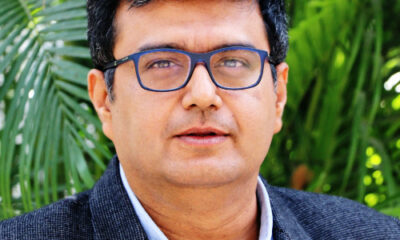
 Education3 months ago
Education3 months agoMayo College Announces New Leadership
-

 Education1 month ago
Education1 month agoPost-pandemic: Embracing Well-being in India’s Schools with My Guide Inside
-
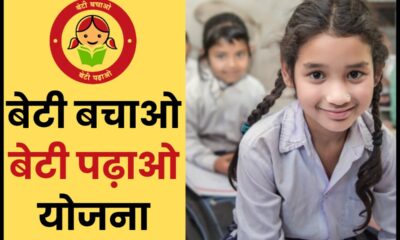
 Education3 months ago
Education3 months agoEmpowering the Future: The Success of Beti Bachao Beti Padhao in Girls’ Education
-

 Education2 months ago
Education2 months agoKerala Introduces ‘Water-Bell’ Initiative in Schools to Boost Hydration
-
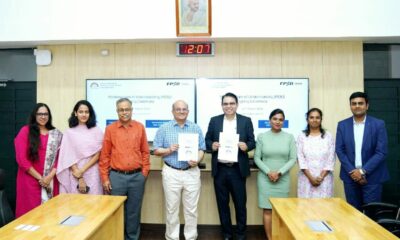
 Education1 month ago
Education1 month agoFPSB India and IIM Bangalore Forge Strategic Partnership to Advance Financial Education
-
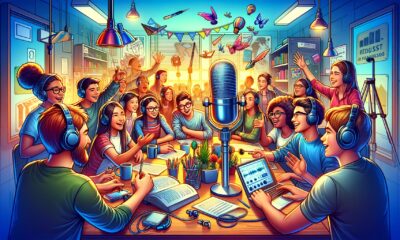
 Education2 months ago
Education2 months agoRadio Broadcasting in Schools: Creating a Platform for Student Voices
-

 Education3 months ago
Education3 months agoFarewell to a Pioneer: Dr. Jagdish Gandhi’s Enduring Legacy in Education
-
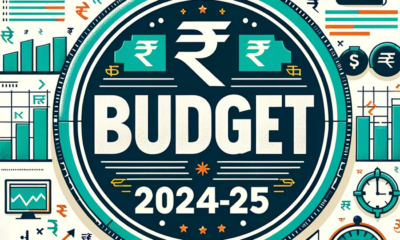
 Education3 months ago
Education3 months agoAnticipating a Progressive Leap: The Education Sector’s Hopes for Union Budget 2024
-
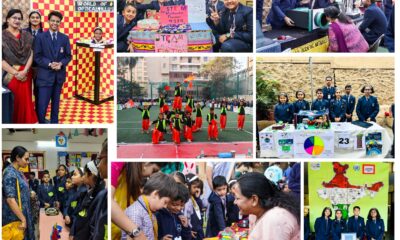
 Education2 months ago
Education2 months agoLexicon Schools Spark Innovation with STEAM Fest



